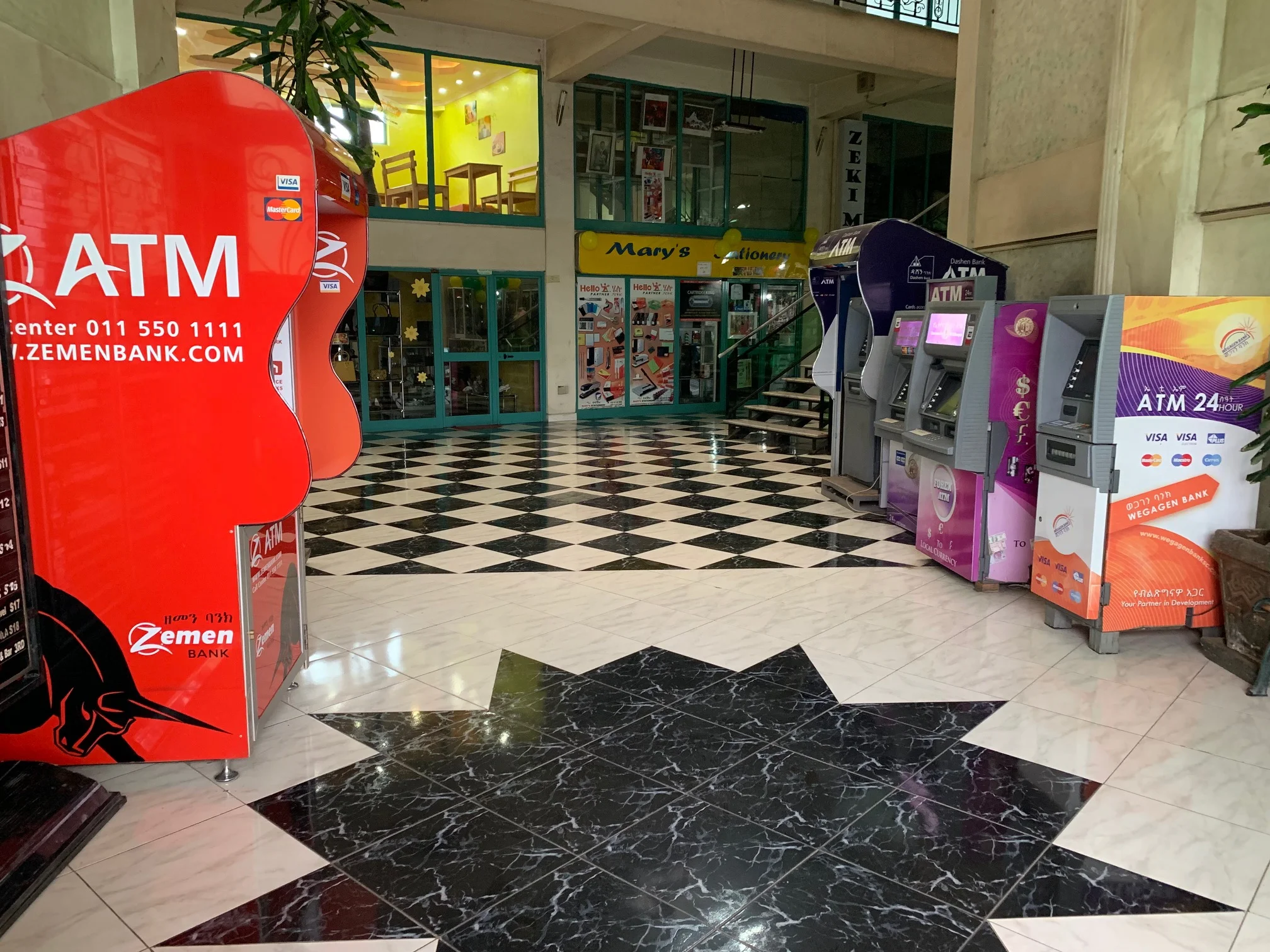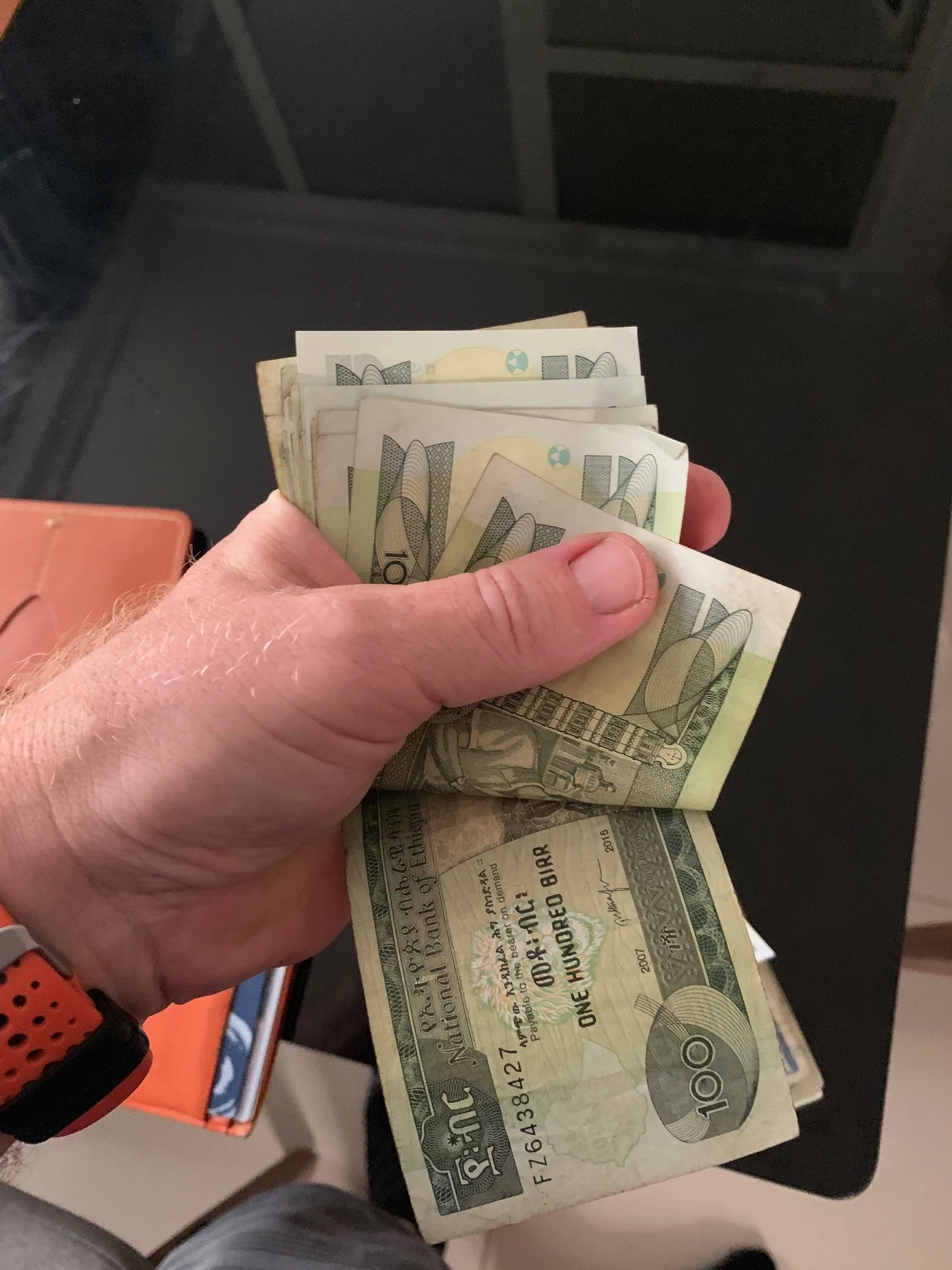Counting cash quickly (and looking for alternatives)
If you try to get anything done in Addis, you need cash. Credit cards aren’t widely accepted, except in the rarest of locations. So be prepared for multiple visits to the ATM. Sometimes daily. Unless, of course, you have a money exchanger (more thoughts on that practice below). Especially if you need to buy anything even moderately sizable. Like a food processor (speaking from experience). Which begs the question:
How do you navigate a cash-based developing economy in an increasingly cashless world?
I’ve been told that Ethiopia’s fiscal challenges are at least partially rooted in not having their currency traded on international exchange markets. As it is, you can buy Ethiopian Birr (pronounced like you’re chilly and/or “is there a draft in here?”) through the banks at somewhere around 30 Birr to the US Dollar. What might happen if that currency began trading on the world market? Inflation. Deflation. Cats and dogs sleeping together. Who knows. I’m already way out of my depth in bringing it up.
The partial lineup of ATMs in Adams Pavilion, nearest our apartment building.
What I can say is that as a new resident of Addis, I’ve needed to visit ATMs with alarming regularity. And what you can get is generally a maximum of between 4000 and 6000 birr per visit. That’s somewhere between $125 and $210. If the network is up (which is another subject all together). The biggest bill and what’s most commonly issued by ATMs is the 100 Birr note. Most of the smaller bills - 5s, 10s and 50s - take a serious beating over time. Whatever denomination, paying for things require bundles of cash that need to be counted. Which I’ve come to very much enjoy watching locals do with speed and precision.
The position from which I’ve been taught to count bills.





